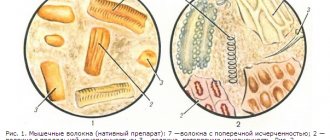Appendicitis
- This is an inflammation of the vermiform appendix of the cecum. The cecum is located at the border of the small and large intestines and is located in the right ileal region. An appendix extends from the cecum, which is a hollow tube measuring 6-12 cm and a diameter of 6-8 mm and is called the “appendix”.
Appendix
until recently, it was considered a useless organ, and even attempts were made to remove it en masse to infants so that it could not cause any problems in the future. However, it was noted that children with removed appendixes lagged behind their peers in mental and physical development, and were also more susceptible to infectious diseases.
The appendix matures cells involved in immune reactions, secretes antibodies, and serves as a repository for beneficial intestinal bacteria.
But the inflamed appendix must be removed.
Acute appendicitis
− the most common surgical disease. Out of every 200 people on earth, one suffers from acute appendicitis. Women get acute appendicitis 2-3 times more often than men. The outcome of acute appendicitis largely depends on the timeliness of seeking medical help.
Causes of the disease
The most common cause of acute appendicitis is blockage of its lumen. Blockage of the appendix can occur with fecal stones - fecal matter, foreign bodies, worms, etc. Usually the part of the appendix that is adjacent to the cecum is blocked. And since the production of mucus in the appendix continues, there is an increase in intraluminal pressure and impaired circulation in the wall of the appendix. Due to poor circulation, the mucous membrane of the appendix swells and loses resistance to microbes that are always present in the lumen. Bacteria penetrate the wall of the appendix, and inflammation occurs. When inflammation covers the entire thickness of the wall of the process, surrounding tissues are involved in the inflammatory process. Spreading throughout the peritoneum, the inflammatory process takes on the character of diffuse peritonitis (inflammation of the peritoneum). That is why early diagnosis of appendicitis and timely removal of the inflamed appendix are so important.
Features of signs in old and senile age
In older people, the course of appendicitis depends on:
- from reducing the reserve capacity of the immune system to protect against infection;
- the presence of concomitant vascular damage by the atherosclerotic process;
- chronic diseases.
The onset of the disease is less acute than in young people, the pain is moderate even in destructive forms. In patients:
- nausea, vomiting, constipation with difficult passage of gases are observed;
- the temperature rarely rises;
- tension in the abdominal muscles is weak or absent;
- The blood test showed moderate leukocytosis without a shift in the formula.
Symptoms
Symptoms of appendicitis depend on the form and stage of the disease, as well as its location in the abdominal cavity and the presence of any complications.
The most constant and obligatory symptom of acute appendicitis is pain
. It is with pain that, as a rule, the disease begins. The classic picture of the development of appendicitis is the appearance of pain in the epigastric (upper abdomen) region and the navel area, which, as the disease progresses, moves to the right iliac region (lower abdomen on the right). The localization of pain corresponds to the location of the appendix, which is why they can be felt not only in the right iliac region, but also in the navel, lower abdomen, right hypochondrium and right lumbar region. As appendicitis progresses, the pain loses its clear localization, which indicates the spread of inflammation throughout the peritoneum and the development of peritonitis.
Acute appendicitis is characterized by a sudden onset of pain and an increase in its intensity as the disease progresses.
Nausea accompanied by single vomiting is one of the symptoms of acute appendicitis.
Stool retention in acute appendicitis is associated with paresis (impaired peristalsis) of the intestine.
Body temperature is slightly increased in the initial stage of the disease, 37.2–37.6 degrees Celsius. As appendicitis progresses, body temperature increases.
With superficial palpation of the abdomen, tension in the muscles of the anterior abdominal wall is noted at the location of the appendix, most often in the right iliac region.
With deep palpation, you can identify a symptom of peritoneal irritation - the Shchetkin-Blumberg symptom - a sharp increase in pain when quickly removing the hand after slow preliminary pressure. This symptom is associated with shaking of the inflamed peritoneum.
Changing body position - turning from the back to the left side - leads to increased pain in the right lower half of the abdomen.
There are several other symptoms characteristic of acute appendicitis, the presence of which is checked by the doctor.
Depending on the changes observed in the appendix, several forms of appendicitis are distinguished: catarrhal, phlegmonous, gangrenous and perforated.
Catarrhal (simple) appendicitis can be regarded as the first stage of inflammation. As a rule, there are no external changes noticeable to the eye in the process. The clinical picture is accompanied by moderate pain, nausea and single vomiting. The blood test shows moderate leukocytosis (increased number of white blood cells).
Phlegmonous appendicitis develops when inflammation covers the entire thickness of the appendix with the formation of pus, both in the wall of the appendix and in its lumen. Accompanied by intense pain in the right iliac region, nausea, and sometimes vomiting. Malaise and weakness appear. Leukocytosis and ESR (erythrocyte sedimentation rate) increase, and symptoms indicating local peritonitis appear.
Gangrenous appendicitis can develop as the next stage of phlegmonous appendicitis, or it can be an independent form of appendicitis with a sharp disruption of blood circulation in the appendix. With gangrenous appendicitis, necrosis of sections of the wall or the entire appendix occurs. The clinical picture of gangrenous appendicitis often manifests itself as subsiding pain in the right iliac region, which is associated with damage to the nervous apparatus of the appendix. The general condition of the patient is severe as a result of severe intoxication.
Perforated appendicitis is a consequence of purulent melting of the appendix wall in phlegmonous appendicitis or its (wall) necrosis in gangrenous appendicitis.
Clinically, this is manifested by increased pain in the right iliac region and its rapid spread throughout the abdomen. The body temperature is high, the general condition is extremely serious, the stomach does not take part in the act of breathing - evidence of diffuse peritonitis.
Chronic forms of appendicitis are relatively rare. There are residual chronic appendicitis, primary chronic and chronic recurrent.
The diagnosis of residual chronic appendicitis can be made if in the past the patient had an attack of acute appendicitis, which resolved on its own.
Primary chronic appendicitis develops gradually, without an attack of acute appendicitis. Characterized by minor pain in the right iliac region. Diagnosis of this form of appendicitis is difficult.
Chronic recurrent appendicitis is characterized by the periodic appearance of symptoms similar to primary chronic appendicitis.
Symptoms of appendicitis
Appendicitis can manifest itself in different ways depending on the anatomical features of the location of the appendix . It can be located in the retroperitoneum, near the liver, and even move to the pelvis during pregnancy. For this reason, no doctor can unambiguously make a diagnosis based solely on complaints of pain in the abdominal area.
The following are considered classic signs:
- pain in the epigastric region that migrates down and to the right. This is due to the pathogenesis of appendicitis and the characteristics of the innervation of the appendix;
- gradual increase in pain;
- lack of appetite;
- vomit. As a rule, with appendicitis it occurs once or twice. In this case, nausea and vomiting appear after the onset of pain;
- slight increase in temperature (up to 37-38°C);
- diarrhea or frequent and painful urge to have bowel movements;
- frequent urination;
- increased heart rate;
- occasionally there is an increase in blood pressure;
- Children with appendicitis typically experience pain during urination. This is due to the fact that an inflamed appendix irritates the bladder.
Important! If a person experiences severe abdominal pain, under no circumstances should they be given painkillers before a medical examination. Anesthesia can cause a blurred clinical picture, which, in turn, will lead to a diagnostic error that can cost the patient his life.
Complications
Complications of acute appendicitis include: infiltrates and ulcers of the abdominal cavity, diffuse peritonitis, pylephlebitis.
Appendiceal infiltrate is a conglomerate consisting of inflamed intestinal loops and the greater omentum and forming around the appendix. Appendiceal infiltrate can be considered as a protective reaction of the body, in which it forms walls from its own tissues around the appendix. These walls prevent further spread of the inflammatory process in the abdominal cavity.
If the body's forces are not strong enough, the appendiceal infiltrate does not resolve, but rather it suppurates, resulting in the formation of a periappendiceal abscess. In this case, an abscess can form not only near the appendix, but anywhere in the abdominal cavity - between intestinal loops, under the liver, in the pelvic cavity and other places. When an abscess forms in the abdominal cavity, the patient’s condition sharply worsens, the temperature rises, and high leukocytosis is detected in the blood.
A serious complication of acute appendicitis is diffuse peritonitis. This occurs when the pus is not limited to walls of its own tissue, as in the case of an abscess, but is distributed throughout the peritoneum.
Pylephlebitis is purulent inflammation of the portal vein. Through the portal vein, blood from the intestines enters the liver for cleansing and disinfection. As a result of purulent inflammation of the portal vein, abscesses develop in the liver, and bacteria begin to multiply in the blood (sepsis). The mortality rate for this complication is extremely high.
What can be judged when examining a patient?
The first symptoms of appendicitis that can be detected upon examination of the patient are considered to be moderate signs of general malaise:
- the patient’s position cannot be classified as a forced position, patients lie quietly on their back or on their right side, there is no excitement;
- body temperature is within 37–38 degrees, the appearance of chills indicates the development of purulent inflammation;
- slight tachycardia appears, increased heart rate increases with increasing temperature, this is associated with destructive processes, increased intoxication and local peritoneal phenomena, their mismatch (tachycardia against a background of normal temperature or bradycardia when it increases) - this is a symptom of the patient’s serious condition;
- the color of the skin does not change, pallor is observed in cases of complications with peritonitis;
- examination of the tongue draws attention to the presence of a white coating, dryness indicates intoxication processes, local or diffuse peritonitis;
- examination of the abdomen shows sparing of the right sections when breathing due to limited mobility of the abdominal wall, more often occurs with phlegmonous or gangrenous form of appendicitis.
Diagnostics
The diagnosis of acute appendicitis is made based on the symptoms described above: pain in the right iliac region (can be in the upper abdomen and umbilical region), nausea, single vomiting, increased body temperature (the temperature difference of more than one degree in the rectum and axillary region is important here), pain on palpation in the right iliac region, blood leukocytosis (increased number of leukocytes), increased ESR, the presence of symptoms of irritation of the peritoneum along with the location of the appendix.
If there are difficulties in making a diagnosis, laparoscopy is used. This is an examination of the abdominal organs with a special optical device inserted into the abdomen through a puncture.
Often, making a diagnosis of acute appendicitis presents certain difficulties, which is associated with the atypical location of the appendix and the degree of inflammation in it. Acute appendicitis must be distinguished from other diseases of the abdomen, chest organs and retroperitoneal space. If you suspect appendicitis in a patient, you need to remember about diseases such as perforated gastric and duodenal ulcers, acute cholecystitis, acute pancreatitis, inflammation of the uterine appendages and impaired ectopic pregnancy, renal colic, dysentery and gastroenteritis, pleurisy and myocardial infarction. Just as when you suspect these diseases, you should always keep acute appendicitis in mind, because it can give a clinical picture of any of the diseases listed above.
Acute appendicitis in children is characterized by a rapid course and resembles gastroenteritis and dysentery, which complicates diagnosis and increases the number of perforated forms of appendicitis.
In elderly people, on the contrary, acute appendicitis occurs in an erased form with a weak clinical picture, so such patients are admitted to surgical hospitals at a later date.
Features of symptoms in childhood
Acute appendicitis affects children of any age. It is very rare during the neonatal period and up to two years. Prevalence peaks between 9 and 12 years of age.
The peculiarity of the clinical course is due to:
- reduced resistance of the peritoneum to any infection;
- small seal;
- more active reactivity of the body.
Inflammation of the appendix in children therefore develops quickly, immediately takes on a diffuse character, and is more severe than in adults.
Young patients, unfortunately, more often suffer from destructive and complicated forms
Pain syndrome is difficult to localize based on complaints. The child experiences:
- heat;
- frequent vomiting;
- diarrhea.
Growing up:
- signs of intoxication (restlessness or lethargy, symptoms of meningism);
- disturbances in water-electrolyte balance leading to dehydration (dry mucous membranes, worsening facial features).
Palpation of the abdomen is difficult due to the child's violent reaction. In older children, it is possible to identify positive symptoms of appendicitis, tension in the abdominal muscles on the right side.
Treatment
Treatment of acute appendicitis is surgical. In the absence of complications, it consists of an appendectomy (removal of the appendix), performed on an emergency basis. For appendectomy, local anesthesia is used. General anesthesia is performed in children, in people with an unbalanced psyche, and also when there is uncertainty about the diagnosis, when expanded access may be required. With the conventional abdominal technique, an incision is made in the right iliac region 4–8 cm long.
In a laparoscopic appendectomy, the appendix is removed through punctures in the anterior abdominal wall. This technique is low-traumatic and highly cosmetic. However, in the presence of complications and destructive forms of appendicitis, it is not used.
Tactics in the treatment of complicated forms of acute appendicitis depend on the nature of the complication.
In case of appendiceal infiltrate, which is prone to resorption, emergency surgery is not performed. The patient is treated conservatively with antibiotics and physical therapy. After resorption of the infiltrate, 2-3 months later, appendectomy (removal of the appendix) is performed as planned, since relapse of the disease is possible.
When abscesses develop in the abdominal cavity, it is necessary to open them and drain them with the prescription of antibacterial therapy.
The treatment tactics for purulent peritonitis, the cause of which is appendicitis, is carried out according to the general rules for the treatment of peritonitis: elimination of the source of peritonitis, careful toileting of the abdominal cavity, drainage of the abdominal cavity followed by washing it, impact on the general condition of the patient.
What else is Kocher famous for?
The name of this surgeon has more than just the symptom described. He is even famous in the field of endocrinology. There, the symptom is that the movement of the eyeball lags behind the movement of the upper eyelid when looking up. In addition, the sclera is visible between the top of the skin fold and the edge of the iris. Such a symptom indicates the presence of a disorder such as toxic diffuse goiter.
Along with this, Kocher is known for having invented some surgical instruments. For example, glass drainage tubes, clamps for the stomach and blood vessels, probes, with the help of which it becomes possible to perform operations on the gastrointestinal tract.
Recommendations
If you experience abdominal pain, seek medical attention immediately. If pain occurs at night or on weekends, call an ambulance. Do not take any painkillers other than no-shpa, as this can erase the clinical picture of an acute disease, which leads to late diagnosis and complications.
Remember, the sooner you contact a specialist, the lower the risk of complications. If treated in a timely manner, surgical treatment is limited to appendectomy only (removal of the appendix).
If you have a choice, then contact a medical institution that can perform a laparoscopic appendectomy. But even if the clinic does not have equipment for laparoscopic operations, an experienced surgeon can perform an appendectomy from a small incision (3–4 cm) followed by a cosmetic intradermal suture.
It happens that in the presence of a clinical picture of acute appendicitis, entering the abdomen, the surgeon sees an unchanged appendix. In such cases, he must check the entire abdominal cavity, identify the cause of the disease and eliminate it. That is why an experienced, highly qualified surgeon is needed.
Localization of the process that is inflamed
Knowing that the Kocher symptom accompanies acute appendicitis, you can promptly diagnose the disease at the initial stage. Localization of pain allows us to understand in which part this organ is located. If there is a standard classic version, then it will be located on the right side. However, if the pain is localized in a different place, then there is a possibility that it is located differently. This should be taken into account during the diagnostic process.
We can say that the inflamed organ has a pelvic location if the pain is concentrated in the womb or on the right and lower abdomen. If the pain is localized in the umbilical region, then we can judge the medial location of the inflamed organ (along the midline of the body).
It happens that the pain is localized in the lumbar or groin region, in the genital area. This is direct evidence that the appendix is located behind the cecum. However, in such a case, one cannot do without differential diagnosis, carried out to exclude renal pathologies and lesions of the ureter.
Very rarely, pain may occur in the lower and left abdomen. This suggests that the location of the appendix is non-standard. It and the cecum are located on the left.
About diagnosing appendicitis in Russia
Appendicitis is inflammation of the appendix of the rectum. For its initial diagnosis, confirmation or refutation of the diagnosis, doctors in Russia use certain symptoms of peritoneal irritation that have been proven over the years. There are few of them, but they are the reliable “old-timers” in clinical practice. Named after the surname of their author:
- Sitkovsky's symptom.
- Kocher's sign.
- Voskresensky's symptom.
- Obraztsov's symptom.
- Rovsing's sign.
- Shchetkin-Blumberg symptom.
The manifestation of each of them depends on a number of factors: the location of the appendix, the cause of inflammation, the advanced stage of the disease, etc. Let's analyze Sitkovsky's symptom and others in more detail.
How is the examination performed?
Technique for identifying Obraztsov’s symptom
To most effectively assess the condition of the organ, deep palpation is performed according to Obraztsov-Strazhesko. The method is based on pressing the palpated organ to the posterior abdominal wall. The procedure allows you to evaluate the size of the organ, shape, and consistency. Technique:
- The patient lies on the couch on his back.
- The doctor places his palm on the surface of the anterior abdominal wall and bends his fingers slightly.
- Then the patient's attention is diverted so that he relaxes his muscles and breathes evenly.
- Meanwhile, the doctor forms a skin fold.
- As you exhale, the hand is immersed in the formed fold and the organ is palpated.
Pressure during deep palpation should be smooth and gradual. Otherwise, there is a possibility that the inflamed appendix will rupture during the examination. The Ben-Asher symptom is considered more benign in its manifestation.
There is also a superficial way of palpating the abdominal cavity. It is carried out from left to right, towards the painful focus. The study is performed with soft, smooth movements. The pressure is shallow.









